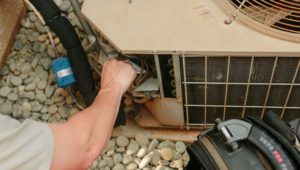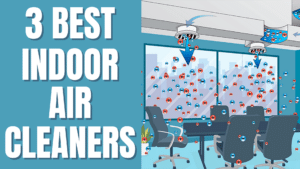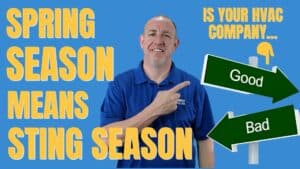There's nothing like getting someone's air conditioning restored when they've been going without. It's all about getting on the job and removing the old package unit on the roof as quickly as possible. Some important crane safety tips are worth following.
HVAC workers regularly have a great time working with each other on the job. Install days can bring a team together because there’s nothing like the satisfaction of getting someone’s air conditioning restored when they’ve been without it. It’s all about getting on the job and removing the old package unit on the roof as quickly as possible so they can be ready when the crane gets there to place the new unit.
You can tell the good crews from the bad ones. Usually, an install crew has one central leader or foreman who is in charge of the job. The rest of the crew are helpers. Whether experienced or not, when a crane is involved, only one person from the team needs to be communicating with the crane operator. This way there’s no confusion when two or more people from the same install crew are giving hand signals to the crane operator at the same time.
For the most part, in residential package unit installs on the roof of a house, the crane operator can see the unit’s placement spot. Maybe not the curb’s actual footprint he’s setting it down on, but experience creates a comfort level for the operator to get the unit pretty darn close to where he needs to place it. There are obstacles the crane operator needs to navigate the unit through. Straps hold the unit secure as the hook holds everything together on the way to the placement. Sometimes there are trees or giant radio antennas, or even high voltage power lines that must be avoided as the unit gets lifted to the roof.
Hand Signals
Hand signals are a straightforward way for the install foreman and the crane operator to communicate. As the unit gets closer to the placement spot, the installer can’t yell at the operator. They’re too far apart! So, a series of hand signals are commonly used in lifting and placement.
Once again, only one person must be giving the hand signals unless a relay is set up between the final resting point and the crane operator. For instance, sometimes a package unit is lifted onto the house’s backside rather than the roof. The operator can’t see the final spot or the hand signals given by the unit’s installer. Only then would a second installer be the middle-man for relaying the signals to the crane.
A culture of safety is super important. New installers can get excited. The homeowners almost assuredly come out of the house to watch the giant crane do its job. And nearby neighbors tend to poke their heads out to see what all the noise is about across the street.
Let’s take a look at a situation where several fairly new people to this whole process, which usually only takes ten to twenty minutes, can find themselves in a potentially life-threatening situation. A 600 lb unit is about to be hoisted from the street, vertically about 30 feet, across the front yard, over the rooftop around any obstacles, and finally, put down on its resting spot—another reason the experienced foreman on the job must take control of all these moving parts.
How many people on the job site are standing near the unit’s path to the rooftop? The neighbor comes over to talk to the homeowner about his new system; kids are running around giddy with excitement. One installer is climbing up the ladder to help out. What could go wrong? Plenty.
One of my biggest fears on crane sites is the “uncontrollables.” I’m concerned mainly about things that can happen with a 600 lb. unit swinging in the air over our heads. So I tell people before the lift (nicely) to get out of the way. Don’t find yourself under the unit while it’s hoisted to the roof, installers on the rooftop included. God forbid if a cable snapped or other mechanical issue happened, we can pay for a new front-yard swing or even a damaged roof for that matter. But you can’t replace a life. Plain and simple.
When the unit gets placed, one or two installers usually have their hands on it, guiding it down onto its spot while the crane slowly lowers it down. At this point, installers must watch that their hands don’t end up in the wrong place, under the unit.
Crane Safety and Power Lines
The most significant safety point to be made is to make sure there are no power lines in the area that you plan on hoisting and operating in. Make sure you have plenty of space between the area you plan to work on and the power line.
Crane lifts on some of my jobs have been so close to power lines, you could see an arcing from the line to the crane boom. Nobody got hurt, but it’s essential to observe general common sense not to go over and touch the crane or be near it.
Use a Certified Crane Operator
The crane company that we use is super professional. We’ve worked together on crane lifts hundreds of times. They do their part but aren’t necessarily responsible for the safety of everyone around the crane. That’s where working together respectfully plays a significant role. I keep an eye out for the crane operator, and he advises us on certain things that might make the lift go smoother.
Communication and Taking Charge of the Job Site
Again, communicate with those near the crane before, during, and after a lift to ensure everyone’s safety. Have a plan and stick to it. And keep it similar from job to job. There’s no need to reinvent the wheel on every job.
Crane Safety on Rooftops
Don’t step backward. It sounds so simple. Don’t step back. Yet, it happens all the time, and even though it’s often without negative repercussions, in a high hazard situation, like on a roof, it could be a critical mistake.
Don’t be hanging out on your cell phone. It’s bad enough walking around on city streets, accidentally bumping into each other while not paying attention to where you’re going. Rooftops are no place for distraction.
Always slow down when you get close to the edge of the roof. If you find yourself in a rush on the rooftop, maybe you should ask yourself why (other than you’re trying to get the job done fast so you can go fishing). Newsflash! It’s hard to go fishing when your leg is broken, ribs cracked, and spine injured from falling off the roof.
Secure Your Ladder
Tying off your ladder, even on a single-story roof, is sooooo smart, but I rarely see it done. It’s another cultural thing. As the leader on your job, show the rest of the crew how it’s supposed to be done. Even as the helper on the job, maybe the foreman is thinking of other stuff. Who says you can’t tie the ladder off? You know it’s the right thing to do for the best crane safety.
Guarding the Gutter
Similar to that is something I’ve bought for my team, called a gutter guard. It props itself inside the gutter, between the gutter’s outer edge and the trim of the roof edge, providing a place for the ladder to rest without damaging the gutter. How many times a day do you go up and down that ladder? How many times can that gutter flex before being permanently disfigured from the last HVAC crew that was on their roof?
Developing a Solid Safety Plan
I’ve been on jobs where we thought the lift would go one way, but when the lift operator got there, they decided it had to go another way. Go with the person who has the most experience with the crane and its capabilities. And if that’s not something that works for you and your team that day, put off the lift until you’ve discussed it with your supervisor. Then you can go in with a solid crane safety plan during the lift, and everyone will be on the same page.
Focusing on Safety
Hopefully, my experience will help refocus your intentions when working on rooftops and dealing with crane lifts. It’s a super fun experience. Everybody just has to make sure they make it home that night.
Thanks so much for coming by, and we’ll see you on the next blog topic.
Fox Family Heating & Air serves Sacramento, Rancho Cordova, and all of Northern California. If you’re looking to schedule HVAC service in these areas, give us a call!




















